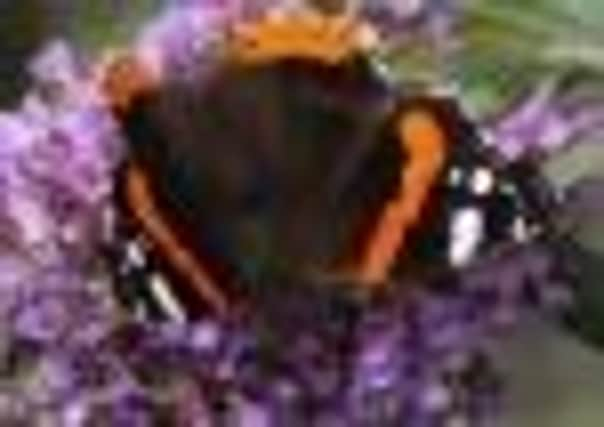Early spring warmth threatens to leave red admirals all at sea


A few even hedge their survival bets and have parts of their populations spending winter in one form and parts in another.
But when we have an extra early burst of spring it’s the fully-grown butterflies that come out first and run the greatest risk posed by a return of cold weather.
Advertisement
Hide AdAdvertisement
Hide AdSo already this year, there have been many reports of butterfly sightings from late February onward until brought to a sudden end by the return of cold weather in April. The most frequent have been small tortoiseshells and peacocks, the populations of which have been diminishing alarmingly over the last few years. This year they came out so early that there were few nectar plants available to provide them with essential food. Eventually, the dandelions also responded to the early sunshine, probably just in the nick of time.
In addition there have been quite few sightings of commas and brimstones as well as several red admirals. More surprising have been the very early sightings of small whites and holly blues which don’t winter as fully-grown butterflies but as chrysalises.
I am always wary of early red admiral reports, especially in Yorkshire. Most of the red admirals we see are annual immigrants from southern Europe and tend to arrive from late May onward. Confusingly, many people have been brought up to call any coloured butterfly a red admiral.
Each autumn red admirals can be seen flying south in an attempt to return to the Mediterranean area. But some either get caught out by poor weather, or may even choose to stay. More and more are managing to survive winters in Britain as hibernating butterflies. However, this butterfly has a problem in that it doesn’t seem able to sleep without a break. In fact it has to wake up every few weeks and have a feed. And what is there to eat in Yorkshire on a cold midwinter day?
Advertisement
Hide AdAdvertisement
Hide AdWell, you will often find the species still flying in November and December, surviving on rotten fruit. Later, it retires to places such as cow byres and stables where it can gain sustenance from the animal droppings.
However, we suspect that many don’t survive this strategy. I recall one Christmas recently seeing a red admiral wing floating in a rainwater pool in a busy city centre. A sad end to a beautiful creature.
The red admiral is easy to identify, being a large, black, poster red and white butterfly. Those red admiral’s stripes, one down each wing are distinctive. If you are not yet familiar with it, why not have a go at picking one out this coming summer?
Howard Frost is Editor of Yorkshire’s annual Butterfly and Moth Report for Butterfly Yorkshire and the Yorkshire Naturalists’ Union and can be contacted via www.yorkshirebutterflies.org.uk